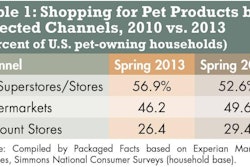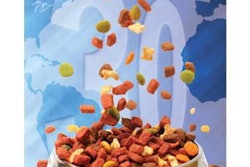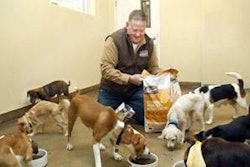I don't really have a crystal ball (and I probably wouldn't trust it if I had one). Nor can I claim to predict, with full confidence, what will happen in the global petfood industry next year. But I can make a fairly informed speculation about the issues and events that may affect petfood in 2014. In no particular order of conviction or chronology:
Food Safety Modernization Act
This law, also known as FSMA, and specifically the proposed preventive control rule for animal feed (including petfood), will continue to have a significant impact:
- For the immediate future, one of the looming questions is whether the petfood and feed industries will have sufficient time to comment on the proposed rule. Currently, the deadline for giving feedback is February 26, 2014. The Food and Drug Administration (FDA) seems willing to extend the period but is bound by a court order to adhere to current deadlines, after missing so many previous FSMA-related deadlines. FDA is appealing the court order, according to Leah Wilkinson of the American Feed Industry Association; if the appeal fails, she says the latest FDA could extend the deadline is a little more than a month, to March 31. Is that enough time for the petfood industry to fully read, comprehend and comment on a proposed regulation that adds up to more than 100 pages?
- One of the many elements of the proposed rule that the industry will definitely push back on (and already has in public meetings held by FDA, according to Food Safety News), is the timeline for implementation of and compliance to the preventive control rule once it's finalized. "So far, FDA has been talking about giving large firms one year to implement the rule," writes Lydia Zuraw on Food Safety News. "Small businesses would have two years and 'very small businesses' – the definition of which has yet to be determined – would have three years." She quotes Daniel McChesney, PhD, director of the Office of Surveillance and Compliance for FDA's Center for Veterinary Medicine, commenting on a proposal from an unnamed trade association to extend that timeline by a year for each size of business. McChesney says that "makes sense," but there is really no way of predicting if that's how the final rule will be written.
- Which brings up the most important aspect of the new rule: What exactly will the final rule include? Will it be prescriptive or allow flexibility for different types of manufacturers or even individual businesses – a major concern for the Pet Food Institute (PFI)? And what about the cost of implementation, possibly the most significant red flag? “FDA assessment suggests that the cost per facility to comply would be US$10,000,” said Duane Ekedahl, president of PFI. “What we’re hearing from our members is that the cost per facility for companies to comply is a huge multiple of that."
Petfood competitive landscape
The latest financial news from Procter & Gamble, parent company of Iams, Eukanaba and Natura petfood brands, heightens expectations and speculation that the global petfood market will continue to see a flurry of mergers and acquisition (M&A) activity, just as it has for the past few years. Questions include:
- Will P&G divest its petfood brands as part of its "under-performing business units," as described by CEO A.G. Lafley in September? The company's third-quarter financial report showed net sales in the healthcare division (which includes petfood) were down 1% during the three months ending in September, according to Euromonitor. Its share of the premium segment of the North American dog and cat food market, while relatively strong at 19% in 2012, stood at 24% as recently as 2008. The company is also weak in emerging markets, accounting for 1% of dog and cat food sales in the expanding Latin American and Eastern European markets in 2012. Its global market share of petfoodfell from 6% to 5% between 2008 and 2012 and is expected to fall again in 2013, Euromonitor said.
- Will Del Monte fulfill rampant speculation and not only buy the P&G brands (at least one of them) but also aggressively pursueother acquisitions? Del Monte has been on a tear this year. First, it acquired Natural Balance Pet Foods, then it divested its human food business to a subsidiary to focus on its pet products. What's next?
- Will another developed petfood market, Western Europe, also continue to see increased M&A activity? A lot has taken place over the past few years, especially among private label petfood manufacturers such as C&D, Arovit and Deurer, which dropped one of the biggest bombshells this past year by acquiring pet product powerhouse Vitakraft. Affinity Petcare made another big move, into Latin America, by purchasing a 50% stake in Mogiana Alimentos.
Trends, we've got trends
Finally, no look into the future would be complete without prognosticating on trends. Plenty of other people have already done that, including:
- Human food trends from Food Ingredients Europe and, in the US, Phil Lempert, the self-titled Supermarket Guru:
- A look back at nutrition-based petfood trends from this year; and
- Yet more human food trends.
But here's a new twist: in the December issue of Pet Product News International, David Lummis of Packaged Facts speculates that perhaps the next big thing in petfood is "biologically appropriate." This harks back to a term and acronym that was widely used several years ago, BARF (biologically appropriate raw food), when the raw food segment was just getting started.
Now, however, several Canadian petfood companies are using the term as a marketing tactic to promote products with characteristics such as high meat, no to low grains, low carbohydrate/low-glycemic and the like, Lummis says. The concept seems to build on the one of feeding dogs and cats "as nature intended" or "as they would eat in the wild" or other marketing ploys we've all come to recognize. What do you think, will biologically appropriate become a trend that soon spreads around the petfood world?

















